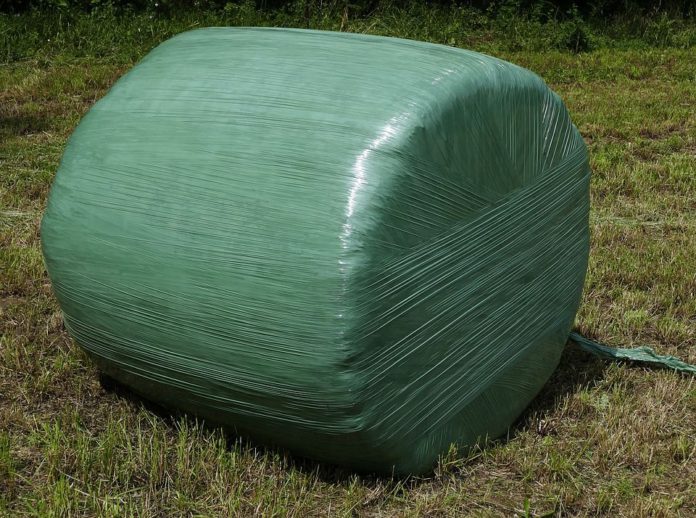In this article, Daniel Hession, a nutritionist, and technical manager with Aurivo Agri-business, urges farmers to act now to improve feed security on farms.
April and May are key months to improve feed security on-farm. While conversations at the moment are mainly dominated by predictions on milk and beef prices and availability of inputs, it is very important that farmers take whatever steps are feasible for their own farm, to improve the security of their feedstocks for the coming season and next winter.
Some modest changes now can add up to significant benefits over time, so plan and act early.
Feed security
- Apply fertiliser to boost grass growth
- 60% of annual grass is grown before the end of June. Adequate nitrogen fertiliser is required to achieve the grass growth potential, so we need to act now.
- Purchase enough fertiliser for silage and for at least one application to grazing ground if you have not done so already.
- Target applications to fields that will give the best response to N; fields that have predominantly perennial ryegrass, have been recently reseeded, are drier, and have good fertility status.
- Apply 25 – 35 units of N per acre (depending on demand) as soon as possible. Protected Urea is the most cost-effective source of N.
- Secure sufficient silage stocks
- Complete a simple feed budget for next winter, comparing projected winter feed demand to planned silage area and feed reserves currently on-farm. Ensure to build in a 3-4-week reserve.
- Check you have closed enough area for silage based on the fodder budget.
- While fertiliser is expensive, it is still vital that farmers spread the required fertiliser to secure sufficient silage stocks to see them through next winter. There is not going to be a huge surplus of silage made this year, and so it would be naïve to rely on purchased silage next winter to meet demand.
- Concentrate prices next winter are going to be high. Therefore, it is really important that you make sufficient quantities of quality silage this summer.
- Farms should have 100% of their winter feed requirement secured by mid to late August.
- Make the best use of slurry
- Silage ground that received 3,000 gal/acre of good quality slurry in March or early April should have received all the P and K required for first-cut silage.
- Spread top up chemical N from 1 week after slurry.
- An average first cut silage crop needs to receive a total of 80 units of N per acre, including slurry. Where slurry has not yet been spread, spreading should be postponed until after first-cut when it should be put out on the bare stubble before regrowth starts.
- If slurry is spread on silage ground late – especially where there is a good cover of grass and if a dry spell occurs – the dry slurry can stay on the grass and cause fermentation problems in the silage.
- In this case, hold slurry until after the first-cut has been harvested. Consider using Low Emission Slurry Spreading (LESS) methods to recover more of the N from slurry. Making up feed deficits is harder later in the year as the response to fertiliser N is lower than in April and May.
- Sell unproductive stock
- This is not a year for carrying passengers. Suckler cows that have lost a calf, dairy cows with high SCC or low milk yields (use milk recording data), autumn calving cows scanned not in-calf, and ewes that have no lambs should all be sold as soon as they are fit to do so.
- For herds breeding their own replacements, be more selective with the number and quality of animals you bring into the herd this year; overall, do not keep any unnecessary or poor performing stock.
- Aim for high-quality silage
- Improving silage quality will increase animal performance e.g. milk yield, live weight gain and reduce concentrate feed costs over winter.
- Do not cut back on fertiliser and rely on delaying the cutting date to make up the yield difference. This will only reduce both the yield and quality of silage for the year. Aim for a late May cut of good quality silage.
- Grassland management
- Graze swards in rotation, aim to have stock in the same field for no more than five days, three days ideally. This is to protect regrowth and maximise growth rates. If stock could be moved to fresh grass twice a week, it would be a big improvement, both in terms of animal performance and in the total amount of grass grown in the year.
- Split larger fields into smaller paddocks. A lot can be achieved with a single line electric fence and a well-placed water trough.
- Skip heavy covers and cut these as silage.
- Spread lime where required
- Apply lime where it is required to grazing ground; it will release N and P from the soil.
- Lime can be spread year-round on grazing ground. Avoid lime on silage ground before harvest; after first-cut is a good opportunity.
More information
Visit Aurivo’s various social media platforms for additional information and advice, or speak to your local farm commercial specialist.
Read more about Aurivo Co-Operative Society, Nutrias and Homeland.





